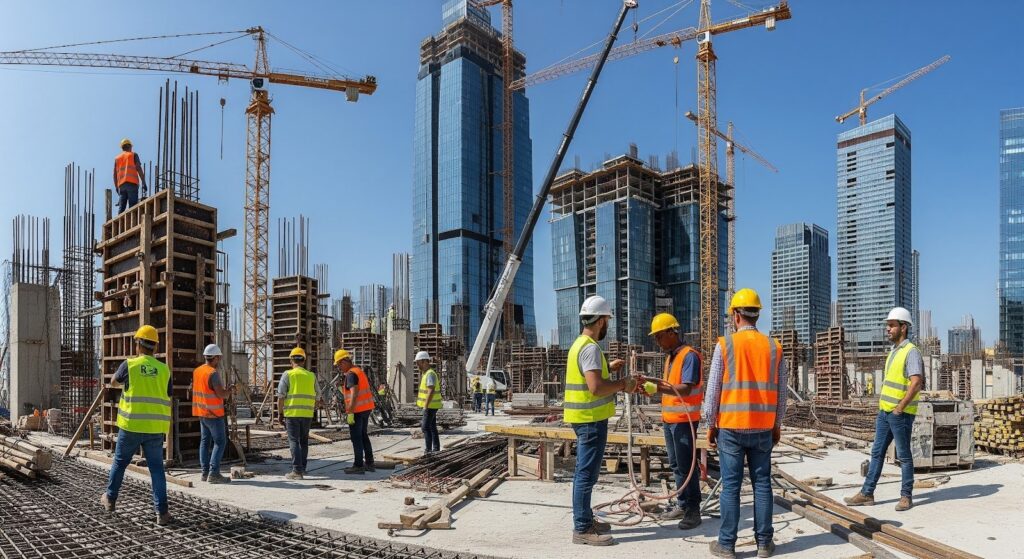Every towering skyscraper and streamlined bridge begins as lines on paper. Meticulous planning separates landmark achievements from abandoned sites. Architects and engineers collaborate for months before breaking ground, balancing aesthetics with structural physics.
Zoning laws, environmental impact studies, and community concerns all shape initial designs. Teams using advanced modeling software simulate stress tests and pedestrian flows digitally. These virtual rehearsals prevent expensive mid-construction redesigns.
The Financial Architecture Behind Builds
Cost management determines whether projects complete or stall. Construction value engineering consultants scrutinize every expenditure, suggesting alternative materials or methods without compromising integrity. Their input often reduces budgets by 15-30% through strategic compromises.
Cash flow projections account for seasonal delays and supply chain fluctuations. Contingency funds protect against unforeseen circumstances like archaeological discoveries on site or sudden tariff changes.
Materials Revolutionizing Modern Construction
Gone are the days when steel and concrete dominated unchallenged. Self-healing bioconcrete repairs its own cracks, while translucent aluminum alloys redefine structural transparency. Cross-laminated timber offers skyscraper-strength sustainability.
Smart glass adapts to sunlight exposure, reducing HVAC loads. Phase-change materials in walls regulate temperatures passively. These innovations emerge from years of research now transforming urban landscapes.
Today, contractors benefit from advanced digital tools like STACK software for general contractors, which help them plan projects more efficiently, estimate costs accurately, and collaborate seamlessly from start to finish.
Labor Dynamics on Contemporary Sites
Workforce shortages have spurred robotic bricklayers and autonomous bulldozers. Yet skilled human oversight remains irreplaceable for complex decision-making. Unions and contractors negotiate new hybrid roles blending traditional trades with tech monitoring.
Safety protocols now include mental health support alongside fall protection systems. Multilingual supervisors bridge communication gaps in increasingly diverse crews.
Regulatory Labyrinths and Compliance Strategies
Permitting processes have grown more intricate with climate adaptation mandates. Projects now require bird migration studies, noise pollution modeling, and carbon sequestration plans. Specialized expeditors navigate bureaucratic mazes across multiple agencies.
Real-time compliance software tracks changing regulations globally. This prevents violations that could trigger work stoppages or retroactive modifications.
When Projects Derail: Post-Mortem Analyses
Examining stalled developments reveals recurring pitfalls. The Sydney Opera House’s original 4-year timeline ballooned to 14 years through design changes, while Berlin’s abandoned airport demonstrates the cost of ignoring expert warnings about fire systems. Common failure points include over-optimistic scheduling, underqualified subcontractors, inadequate soil testing, and leadership turnover during critical phases.
Technology’s Double-Edged Impact
Drones conduct progress surveys in hours instead of days, but overreliance on digital tools creates vulnerability. The 2022 ransomware attack on a German construction firm delayed deliveries by months, proving the need for balanced tech integration that maintains efficiency without sacrificing security.
Blockchain now verifies material provenance, ensuring conflict-free minerals and sustainable timber reach sites. Meanwhile, augmented reality helmets let engineers visualize piping behind walls before making cuts, reducing errors.
Case Study: The Turning Torso’s Lessons
Malmö’s twisting skyscraper demonstrates innovative problem-solving at scale. Engineers developed a rotating concrete core to stabilize its spiral form, requiring custom software to calculate 5,000 unique window dimensions. The project’s success hinged on precise weather window scheduling for concrete pours, transportation of prefabricated units by barge, and continuous stress monitoring during the building’s rotation phase.
Future-Proofing the Next Generation of Builds
Modular designs allow floorplan reconfiguration as needs evolve, while underground developments gain popularity for urban heat island mitigation. Forward-thinking projects now incorporate demolition plans from inception, specifying recyclable materials for future deconstruction rather than landfill disposal.
Carbon-negative buildings actively remove atmospheric CO2 through photosynthetic facades, and dynamic foundation systems adjust to soil movement from climate change-induced weather extremes. These innovations point toward a more responsive architectural future.
The Human Element in Megaprojects
Ultimately, construction remains a profoundly human endeavor despite technological advances. Veteran crane operators intuit wind dangers sensors might miss, while community liaisons translate neighborhood concerns into thoughtful design adjustments. The most celebrated projects balance engineering precision with cultural sensitivity—creating functional art that serves populations for generations. This alchemy of steel, sweat, and vision continues reshaping our world one beam at a time.

